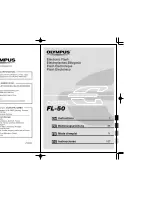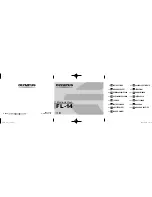
5-13
Cisco Video Surveillance 8620/8630 IP Camera Reference Guide
Chapter 5 Configuration
Media > Image
You can click
Restore
to recall the original settings without incorporating the changes. When completed
with the settings on this page, click
Save
to enable the setting. You can also click
Profile mode
to adjust
the settings described above in a tabbed window for special lighting conditions.
Exposure
On this page, you can configure the Exposure measurement window, Exposure level, Exposure mode,
Exposure time, Gain control, and Day/Night mode settings. You can configure two sets of Exposure
settings: on the
Normal light mode
tab for normal situations, or on the
Profile mode
for special
situations, such as the day/night/ schedule mode.
Normal light mode
•
Measurement Window—This function allows you to set measurement window(s) for low light
compensation. For example, where low-light objects are posed against an extremely bright
background. You may want to exclude the bright sunlight shining through a building's corridor.
–
Full view—Calculate the full range of view and offer appropriate light compensation.
–
Custom—This option allows you to manually add customized windows as inclusive or exclusive
regions. A total of 10 windows can be configured.
The inclusive window refers to the “weighed window”; the exclusive window refers to “ignored
window.” It adopts the weighed averages method to calculate the value. The inclusive windows
have a higher priority. You can overlap these windows, and, if you place an exclusive window
within a larger inclusive window, the exclusive part of the overlapped windows will be deducted
from the inclusive window. An exposure value will then be calculated out of the remaining of
the inclusive window.
–
BLC (Back Light Compensation): This option will automatically add a “weighted region” in the
middle of the window and give the necessary light compensation.
–
HLC (Highlight Compensation)—Firmware detects strong light sources and compensates on
affected spots to enhance the overall image quality. For example, the HLC helps reduce the
glares produced by spotlights or headlights.
•
Exposure control:
–
Exposure level—You can manually set the Exposure level, which ranges from –2.0 to +2.0 (dark
to bright). You can click and drag the semi-circular pointers on the Exposure time and Gain
control slide bars to specify a range of shutter time and Gain control values within which the
camera can automatically tune to an optimal imaging result. You may prefer a shorter shutter
time to better capture moving objects, while a faster shutter reduces light and needs to be
compensated by electrical brightness gains.
–
Exposure mode—You can click and drag the semi-circular pointers on the Exposure time and
Gain control slide bars to specify a range of shutter time and Gain control values within which
the camera can automatically tune to an optimal imaging result. You can also configure the iris
size to control the amount of light. For example, you may prefer a shorter shutter time to better
capture moving objects, while a faster shutter reduces light and needs to be compensated by
electrical brightness gains.
- Auto—If you set Exposure mode as Auto, the Exposure time and Gain control will not be
configurable because the sensor library will automatically adjust the value according to the
ambient light. Then you can configure iris mode as “indoor” or “outdoor” to reach the best
image quality.
Содержание 8620
Страница 8: ...vi Cisco Video Surveillance 8620 8630 IP Camera Reference Guide ...
Страница 32: ...1 24 Cisco Video Surveillance 8620 8630 IP Camera Reference Guide Chapter 1 Getting Started Network Deployment ...
Страница 44: ...3 8 Cisco Video Surveillance 8620 8630 IP Camera Reference Guide Chapter 3 IP Camera Main Page ...
















































